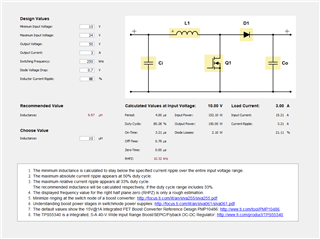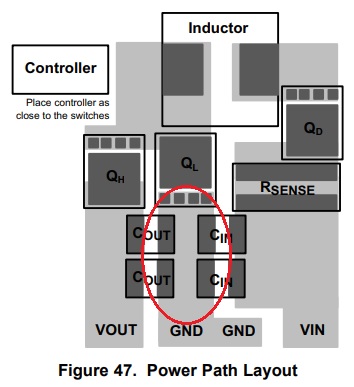Other Parts Discussed in Thread: LM51551, LM5122, LM5123EVM-BST
Hello,
I've designed a DC-DC converter from 12-24V input (min. 10V, typ. 12V) to 50V output with 150W peak power. I did a simple Excel spreadsheet for simplyfying calculations, yellow cells are user inputs. Considering that converter will work in the range of 30-100W load for most time and 150W peak power will be used from time to time for a few minutes, are you able to check my calculations and schematics?
Thank you in advance.
Greetings,
Bart




